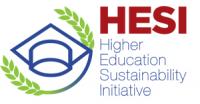Fashion Institute of Technology, State University of New York.
Description
The Fashion Institute of Technology (FIT) has been committed to and continues to engage in sustainability projects. FIT has already completed many sustainable projects on campus. Each year a sustainability conference is held on campus and FIT reports to the college community the projects that have been completed, as well as those that are planned or in progress.In 2012 through 2013, FIT will continue energy curtailment programs with our utility providers. In summer of 2012, we will proceed with the HVAC refurbishment and replacement in our Co-Ed dormitory. This building is 15 stories, 90,000 GSF with 233 Units. FIT's goal is to reduce the carbon emission from the building. The existing equipment uses steam as the source of energy. It is estimated that approximately $10,000 a month will be saved with this conversion. The reduction in the building's carbon footprint will be significant, as steam generates considerable soot in an urban center like New York City. This was modeled to achieve a 650 ton carbon emission reduction.The installation of new dormitory occupancy sensors (2012-2013) in one of our residence halls will reduce energy costs in addition to the installation to new energy efficient lighting.FIT is committed to painting additional cool roof surfaces within the next year. Solar reflectivity expresses the degree to which a roof reflects the visible, infrared and ultraviolet rays that comprise solar energy. Surfaces with high solar reflectivity reflect more infrared and ultraviolet rays. A cool roof reduces the amount of energy absorbed by the roof which helps lower a buildings' temperature and cuts energy costs.
SDGS & Targets
Goal 4
Ensure inclusive and equitable quality education and promote lifelong learning opportunities for all
4.1
By 2030, ensure that all girls and boys complete free, equitable and quality primary and secondary education leading to relevant and effective learning outcomes
4.1.1
Proportion of children and young people (a) in grades 2/3; (b) at the end of primary; and (c) at the end of lower secondary achieving at least a minimum proficiency level in (i) reading and (ii) mathematics, by sex
4.1.2
Completion rate (primary education, lower secondary education, upper secondary education)
4.2
By 2030, ensure that all girls and boys have access to quality early childhood development, care and pre-primary education so that they are ready for primary education
4.2.1
Proportion of children aged 24–59 months who are developmentally on track in health, learning and psychosocial well-being, by sex
4.2.2
Participation rate in organized learning (one year before the official primary entry age), by sex
4.3
By 2030, ensure equal access for all women and men to affordable and quality technical, vocational and tertiary education, including university
4.3.1
Participation rate of youth and adults in formal and non-formal education and training in the previous 12 months, by sex
4.4
By 2030, substantially increase the number of youth and adults who have relevant skills, including technical and vocational skills, for employment, decent jobs and entrepreneurship
4.4.1
Proportion of youth and adults with information and communications technology (ICT) skills, by type of skill
4.5
4.5.1
Parity indices (female/male, rural/urban, bottom/top wealth quintile and others such as disability status, indigenous peoples and conflict-affected, as data become available) for all education indicators on this list that can be disaggregated
4.6
By 2030, ensure that all youth and a substantial proportion of adults, both men and women, achieve literacy and numeracy
4.6.1
Youth/adult literacy rate
4.7
By 2030, ensure that all learners acquire the knowledge and skills needed to promote sustainable development, including, among others, through education for sustainable development and sustainable lifestyles, human rights, gender equality, promotion of a culture of peace and non-violence, global citizenship and appreciation of cultural diversity and of culture’s contribution to sustainable development
4.7.1
Extent to which (i) global citizenship education and (ii) education for sustainable development are mainstreamed in (a) national education policies; (b) curricula; (c) teacher education and (d) student assessment
4.a
Build and upgrade education facilities that are child, disability and gender sensitive and provide safe, non-violent, inclusive and effective learning environments for all
4.a.1
Proportion of schools offering basic services, by type of service
4.b
4.b.1
Volume of official development assistance flows for scholarships
4.c
By 2030, substantially increase the supply of qualified teachers, including through international cooperation for teacher training in developing countries, especially least developed countries and small island developing States
4.c.1
Proportion of teachers with the minimum required qualifications, by education level
SDG 14 targets covered
Deliverables & Timeline
Resources mobilized
Partnership Progress
Feedback
Action Network


Timeline
Entity
SDGs
Geographical coverage
More information
Countries
Contact Information
Joyce F. Brown, President
